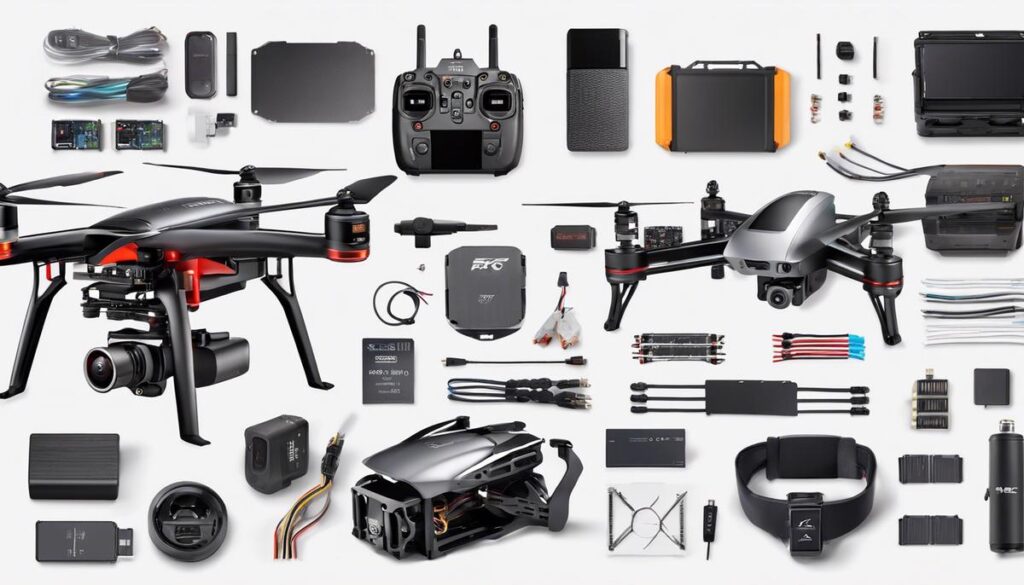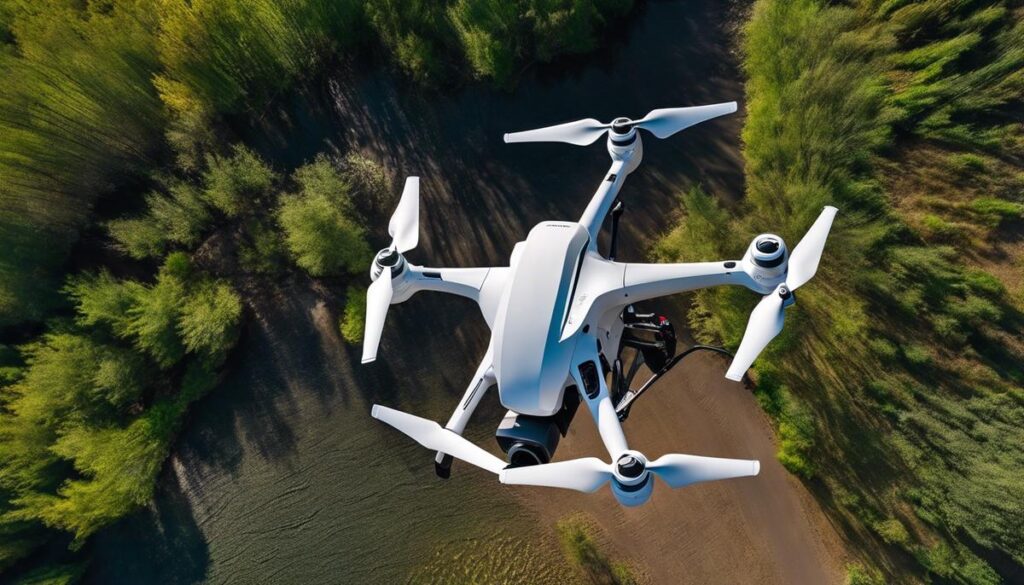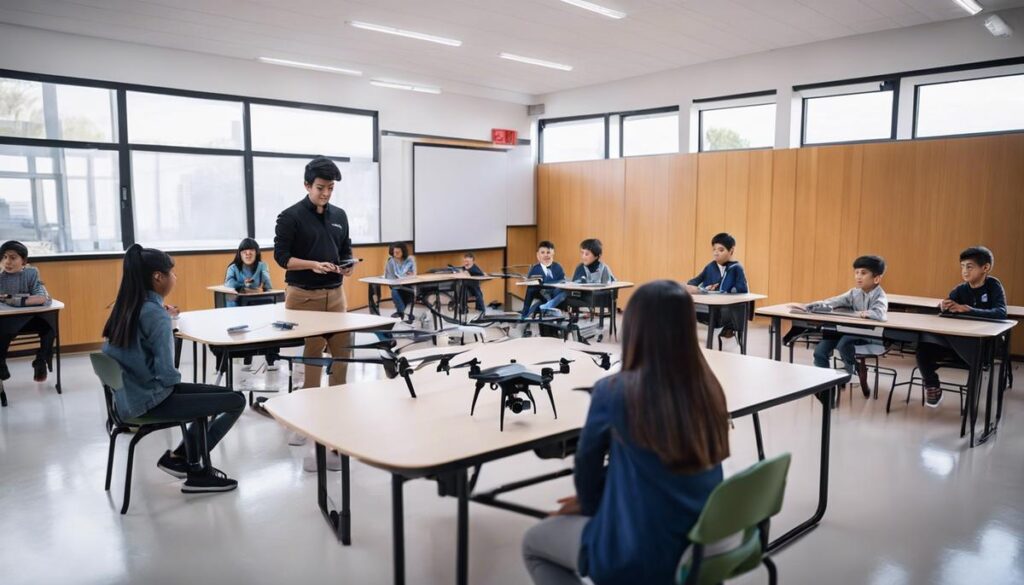Stepping into the world of FPV (First-Person View) drones opens up a sky full of exciting possibilities, where the freedom of flight meets the thrill of aerial acrobatics. As an aspiring FPV freestyle pilot, you are about to embark on a journey that will challenge your hand-eye coordination, your understanding of aerodynamics, and your ability to weave creativity into every maneuver. This journey begins with a solid grasp of the fundamentals, from the intricacies of assembling your very own FPV drone to mastering the laws that govern its flight. In the high-octane arena of FPV freestyle, it’s not just about flying; it’s about expressing yourself in the airspace with flair and finesse. So tighten your goggles and prepare for takeoff, as we delve deep into the essentials of FPV flying, setting the stage for you to become an artist of the skies.
Understanding FPV Drone Basics
Sky’s the Limit: The Essential Components of an FPV Drone
Are you ready to soar through the skies, cinematic pilot? FPV drones are the ticket to an immersive aerial experience like no other. Whether capturing breathtaking sceneries or racing through obstacle courses, understanding the essential components of your FPV (First Person View) drone is the first step toward that exhilarating flight. So, grab your toolkit, and let’s take off into the world of FPV drones!
The Frame: Your Drone’s Backbone
The frame acts as the skeleton of the drone. It’s what holds everything together. When looking for a frame, durability, and weight are your main concerns. You’ll want one that can survive a few crashes (because they will happen) and light enough to perform agile maneuvers. Plus, consider the ease of accessing components for repairs and adjustments; convenience is golden.
Motors: The Muscle Power
Without motors, your FPV drone is just a static display piece. Typically, you’ll find four motors on a drone, but the number can change with different drone designs. The motors are the muscle, providing the thrust needed to cut through the sky. Brushless motors are the go-to for durability and efficiency — they’ll help you reach those heart-pounding speeds.
ESCs: The Motor Maestros
Electronic Speed Controllers (ESCs) are the conductors of the motor symphony, controlling the speed and direction. ESCs can be separate components or integrated into an all-in-one flight controller. They ensure smooth and responsive performance and are indispensable for fine-tuning your flights.
Flight Controller: The Brain
The flight controller is the literal “brains” of the operation. It makes real-time adjustments to keep the drone stable and responsive to your controls. This component processes data from various sensors and coordinates the ESCs, so your FPV drone flies like a dream. Get one that supports the latest firmware for a sleek and smart piloting experience.
Propellers: The Wings
Propellers are the extensions of the motors’ might, translating rotational speed into the thrust that propels the drone. Their design impacts efficiency, noise, and the overall feel of the flight. Having a couple of spare sets is a good idea, because propellers tend to be the first victims in any rough landing.
Battery: The Power Plant
The lifeblood of any FPV drone is its battery. LiPo (Lithium Polymer) batteries are favored for their capacity-to-weight ratio, offering the vitality needed for lengthy, dynamic flights. Monitor the battery’s voltage to keep it performing at its best, and always prioritize safety during charging and handling.
FPV Camera and VTX: Your Eyes in the Skies
An FPV drone wouldn’t live up to its name without the camera and Video Transmitter (VTX). The FPV camera captures the view, and the VTX sends the live feed to your goggles or monitor. Look for cameras with wide dynamic range and good resolution — you want to see clearly, after all! The VTX should have adjustable power output to meet different range needs and comply with local regulations.
Receiver and Transmitter: The Communication Link
The receiver is installed on your drone, while the transmitter (or remote control) remains in your hands. This duo forms the essential communication link, translating your commands into action. Robust signal quality and minimal interference are key, ensuring your in-flight experience is fluid, and, frankly, crash-free.
Goggles or Monitor: The Immersive Experience
Ultimately, the heart of the FPV experience lies in the goggles or monitor. For an unyieldly immersive experience, FPV goggles are unparalleled, placing you in the cockpit of your high-flying creation. If you prefer to keep one foot on the ground, a monitor might be preferred, especially for those first learning the reins.
Embarking on the FPV drone journey is about tailor-fitting the experience to your style and enjoying every thrust and pivot along the way. The right components elevate your piloting adventure from the hobby level to the realms of art. So gear up, calibrate those settings, and embrace the sky-high thrill of FPV droning!
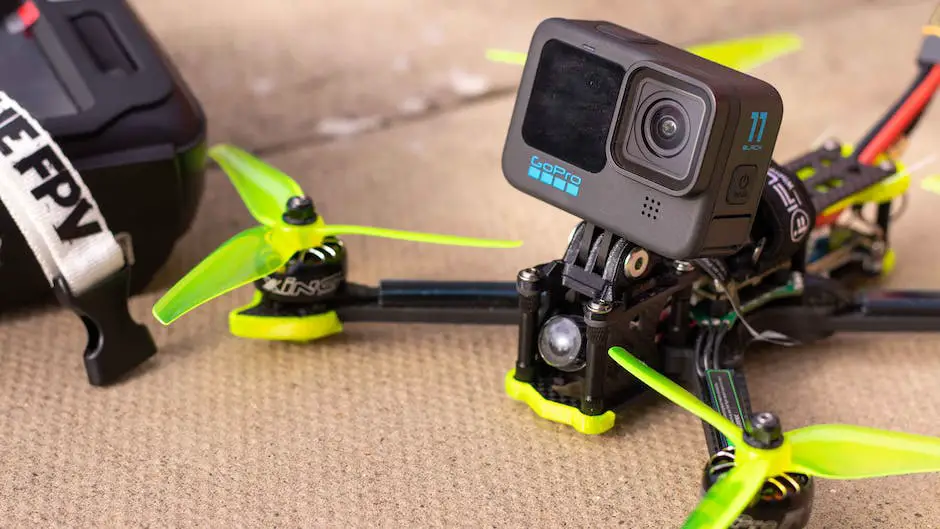
Learning FPV Flight Dynamics
Controlling an FPV (First Person View) drone during flight is a mesmerizing experience that combines the thrill of flying with the challenge of precise maneuvering. It’s like stepping into the cockpit of your very own aircraft, nestled right behind the controls. For those who are keen to master this exhilarating skill, here’s a straightforward guide on how to navigate the skies with your FPV drone.
Understanding Your Controls
Before takeoff, make yourself familiar with the control sticks on your transmitter. On a typical mode 2 transmitter, the left stick controls throttle (up/down) and yaw (turn left/right), while the right stick manages pitch (forward/backward) and roll (tilt left/right). It’s essential to get a feel for these controls, as they are your direct line to your drone’s movements.
Starting With the Basics
Initiate a smooth takeoff by gently pushing the throttle up. Keep your movements gradual to avoid jerky reactions from the drone. Once airborne, practice hovering at different altitudes. Experiment with adjusting the throttle, and get accustomed to how your drone stabilizes in mid-air with minor throttle corrections.
Pitch and Roll
When you’re ready, introduce the pitch and roll functions. Push the right stick gently forward to nudge the drone ahead or pull back to reverse. Similarly, pushing the stick to the sides initiates a roll, causing the drone to slide left or right. Start with small movements; over time, your coordination will grow, allowing for more fluid and confident maneuvering.
Practicing Yaw Movements
Yaw control adds a layer of complexity to your flight dynamics. This function rotates your drone on its axis, offering a panoramic view of the surroundings. Use yaw in combination with pitch and roll to execute smooth turns. Remember, yaw movements should be subtle – think of it as fine-tuning your drone’s orientation rather than rapid spins.
Combining Controls for Advanced Maneuvers
As you become more comfortable, begin to combine control inputs for advanced flight patterns. This is where the real fun begins – banking turns, figure eights, and even flips become part of your repertoire. The magic of FPV is that you’re not just operating a drone; you’re piloting it with a sense of connection and precision.
Dealing With Wind and Weather
Weather can be a pilot’s friend or foe. Light winds require compensation with control inputs to maintain stability. Always be aware of your environment and adjust accordingly. If the wind picks up, it’s time to give your drone a break.
Safety and Responsiveness
Throughout your flight, prioritize safety. Keep a keen eye on your drone’s battery levels and signal strength, as indicated on your goggles or monitor. Responsiveness to these factors is pivotal; losing power or connection can lead to a quick end of your flight session. Have contingency plans for safe landings and be ready to react to unexpected situations.
In conclusion, controlling an FPV drone is about developing a symbiotic relationship with your controls, gaining a deep understanding of how your drone behaves in the air, and reacting to the environment around you. With practice and patience, those flights become not just about controlling a drone, but about orchestrating an aerial dance where every input translates into a graceful maneuver. So gear up, get out there, and let the thrill of FPV flight redefine what it means to soar through the skies.
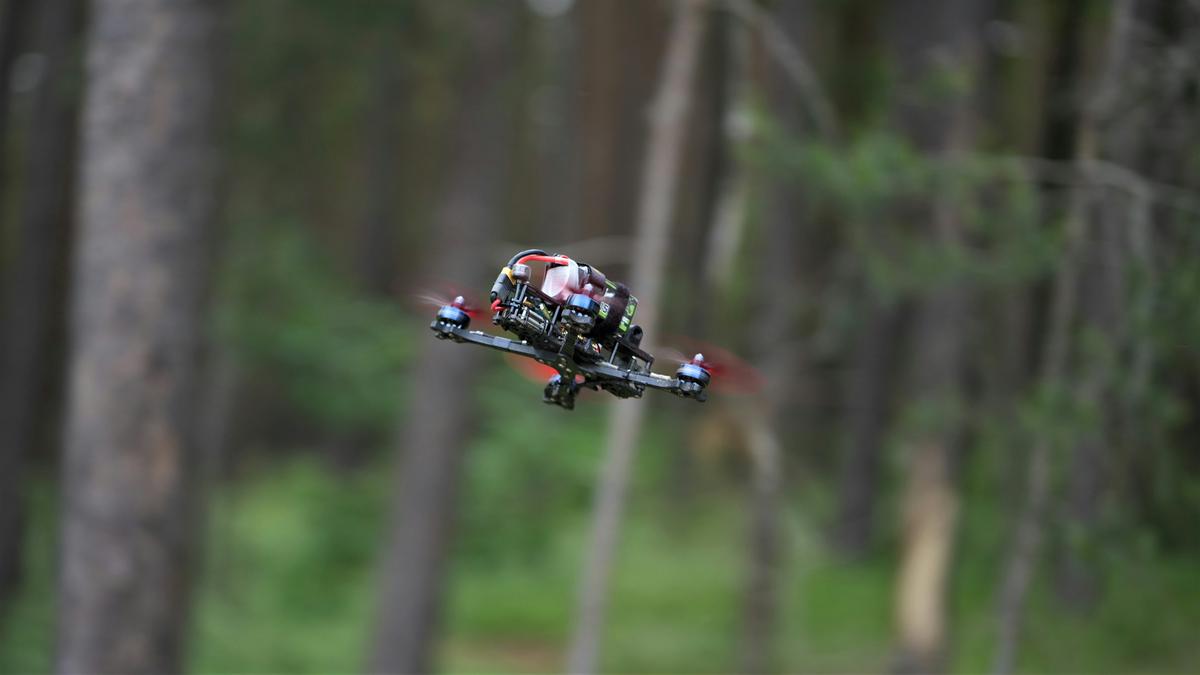
Photo by benzin1expl on Unsplash
Mastering Freestyle Maneuvers
Understanding Your Controls
Positioned at the very heart of your FPV flying experience, mastering your controls is much like learning the strokes of a paintbrush. Each adjustment you make tells your drone how to move within the infinite canvas of the sky. Begin with getting to know each stick on your transmitter intimately – how they feel and react under your thumbs. Anticipate the drone’s movements in response to your commands without hesitation.
Starting With the Basics
Before taking a headlong plunge into complex maneuvers, it’s crucial to nail down the fundamental movements: hovering and smooth, controlled flying. Hovering is a cornerstone skill for any pilot. Practice maintaining a stable flight in one position, making minute adjustments to counteract drift. This will form the base upon which all other actions build.
Pitch and Roll
The poetry of flight lies in the pitch and roll. To pitch is to move the drone forwards or backward, tilting on a horizontal axis. Think of this as your drone nodding its head in agreement—smoothly and with a controlled rhythm. Rolling, however, is your drone’s way of leaning into a curve, banking left or right on a central axis. This maneuver grants the stylish sweeps and dynamic turns that embody the spirit of freestyle.
Practicing Yaw Movements
Where roll and pitch are about tilting and angling, yaw is the art of rotation. Use yaw to spin your drone left or right on its vertical axis, the same way you’d turn your head to look around. It’s a staple for orientation control and setting up for more complex tricks. With yaw control in your skill set, you create transitions and pivots that can add flair to any aerial routine.
Combining Controls for Advanced Maneuvers
Once hovering, pitch, roll, and yaw become second nature, start blending these movements to execute more intricate aerial dances. Spirals, funnels, and flips are just the beginning. A nuanced mix of pitch, roll, and yaw will allow you to perform jaw-dropping stunts like barrel rolls and power loops with finesse and precision.
Dealing with Wind and Weather
An FPV pilot must also become a bit of a weather wizard. Understanding how wind and atmospheric conditions affect your drone’s behavior is essential. Learning to compensate for these environmental factors using your controls will ensure you keep your drone stable and responsive, regardless of gusty challenges.
Safety and Responsiveness
Always consider the safety envelope when practicing tricks. Keeping your maneuvers within a risk-assessed area ensures not only your safety but the safety of bystanders and your gear. Develop quick reflexes for those moments when drones stray off course, and always be prepared to make rapid corrections or even initiate an emergency shutdown.
Remember, every masterful FPV pilot started as a beginner, with their gaze lifted towards the skies in wonder. With commitment to practice, an eye for safety, and a dedication to understanding the nuances of your craft, these basic freestyle tricks will soon become the foundation of an enthralling aerial ballet that you conduct from the ground below.
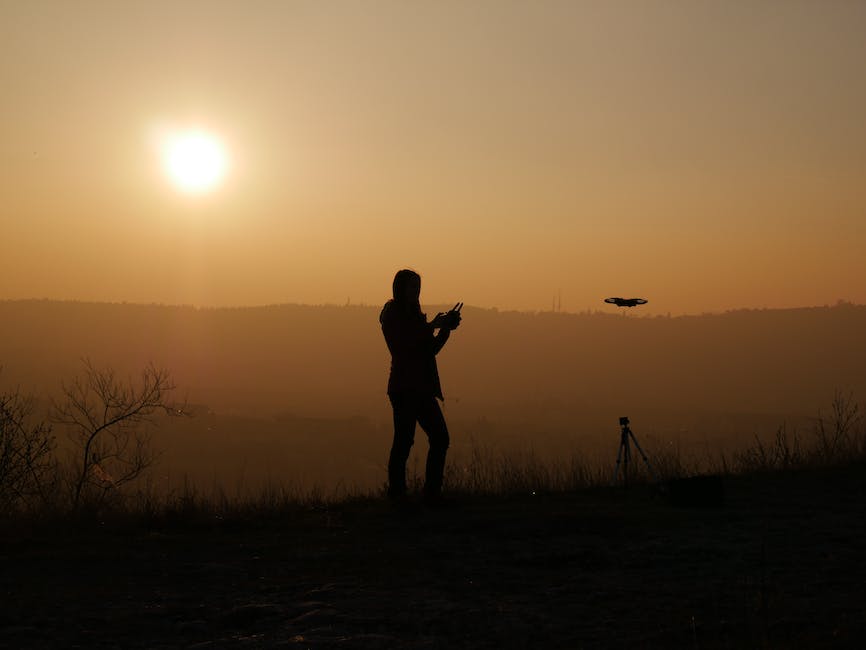
The art of FPV freestyle is a constant evolution, a dance between pilot and drone that grows more captivating with every flight. Embracing the building blocks of drone anatomy and flight dynamics is just the beginning of what promises to be an exhilarating journey. As you continue to hone your skills through disciplined practice and a penchant for pushing boundaries, the sky becomes not just a playground but a canvas for your imagination. Keep your propellers spinning and your sights set high, for every flip, roll, and power loop is a step closer to achieving aerial mastery. Remember, the path to awe-inspiring freestyle flows not just from the knowledge you’ve gained but from the creative spirit you bring to each and every flight.

